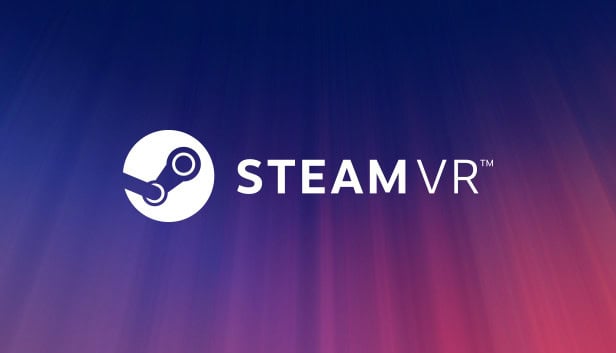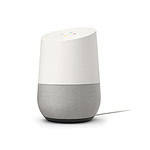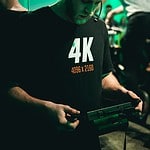Exploring SteamVR base stations can reveal a lot about how virtual reality headsets and controllers work. These devices use lasers to track movements accurately and provide an immersive VR experience. SteamVR base stations support various headsets and controllers, like the HTC Vive Pro series.
SteamVR base stations are crucial for virtual reality setups. They allow users to move freely in their play area without losing tracking. This helps in achieving a high level of immersion and making VR experiences more enjoyable.
With the latest version, SteamVR Base Station 2.0, users get improved tracking for larger play areas. Wireless syncing and wide-area tracking are features that make these devices stand out. For gamers and VR enthusiasts, these stations make a significant difference in their VR experiences.
Enhancing Your VR Experience: Base Station Best Practices
Understanding Base Station Types
SteamVR base stations come in two main versions: 1.0 and 2.0. Both use infrared light to track your VR headset and controllers, but 2.0 offers improved range, accuracy, and field of view.
Base Station 1.0
- Range: Up to 5 meters diagonal for reliable tracking.
- Field of View: 150 degrees.
- Features: Requires sync cable for optimal performance.
Base Station 2.0
- Range: Up to 7 meters per base station, allowing for larger play areas.
- Field of View: 150 degrees, but with improved tracking across the entire range.
- Features: Sync cable not required, easier setup and calibration.
Optimal Placement and Setup
To get the most out of your SteamVR base stations, proper placement and setup are crucial. Here are some tips:
- Height: Mount base stations at least 2 meters high, ideally above head level. This minimizes occlusion and ensures the best tracking coverage.
- Angle: Aim the base stations slightly downwards towards the center of your play area. This optimizes tracking for both standing and seated experiences.
- Distance: For two base stations, aim for a distance of 5-6 meters apart. If you’re using four base stations, you can cover a larger area of up to 10×10 meters.
- Lighting: Avoid direct sunlight or strong reflections on the base stations, as this can interfere with tracking.
- Calibration: Use the SteamVR Room Setup tool to calibrate your base stations and ensure optimal tracking performance.
Troubleshooting Common Issues
If you’re experiencing tracking problems, here are some common fixes to try:
- Check for obstructions: Make sure there are no objects blocking the line of sight between the base stations and your headset/controllers.
- Update firmware: Keep your base stations updated with the latest firmware from SteamVR.
- Recalibrate: If tracking remains problematic, try recalibrating your base stations using the Room Setup tool.
- Clean sensors: Dust or dirt on the base station sensors can affect tracking. Clean them gently with a soft cloth.
Base Station Comparison Table
| Feature | Base Station 1.0 | Base Station 2.0 |
|---|---|---|
| Range | Up to 5m diagonal | Up to 7m per base station |
| Field of View | 150 degrees | 150 degrees |
| Sync Cable | Required | Not required |
| Setup | More complex | Easier |
| Calibration | More frequent | Less frequent |
| Cost | Lower | Higher |
Key Takeaways
- SteamVR base stations use lasers to track movements.
- They support headsets like HTC Vive Pro for an immersive experience.
- Wide-area tracking and wireless syncing enhance VR setups.
Understanding SteamVR Base Stations
SteamVR Base Stations are essential for accurately tracking movements in virtual reality environments. This section details their technology, types, installation, and maintenance.
Technology and Functionality
SteamVR Base Stations use lasers to track devices in a VR environment. Each base station has spinning lasers and a laser sweep to map the room. This lets the system track head movement and controllers accurately. The lasers project across the entire room to ensure precise tracking.
Base Stations work in tandem, usually requiring at least two units for full coverage. They create a network that covers the play area, ensuring no gaps. For best results, the tracking uses infrared pulses to locate VR devices.
Types and Compatibility
There are two main types: Base Station 1.0 and Base Station 2.0. Base Station 2.0 provides a wider field of view and can work with more base stations, reducing occlusion issues. They are compatible with different headsets like Valve Index and HTC Vive Pro.
1.0 Base Stations are still useful but may face limitations in larger playspaces. Compatibility with your VR system is crucial, so ensure your hardware supports the specific base station type.
Installation and Setup
Proper setup is key for optimal performance. Mount each base station at least 0.5 meters (1.6 feet) high. Adjust the angle to cover the entire play area. Secure them on stable surfaces to prevent movement.
Connect the base stations to power and link them with your PC. Use software like SteamVR’s Room Setup to configure the layout. Make sure the area is free from reflective materials that could interfere with the laser tracking.
Maintenance and Troubleshooting
Regular maintenance keeps base stations working well. Dust them off and check for any damage. If a base station won’t detect or stops tracking, verify connections and ensure the firmware is up to date.
Rebooting the system or power cycling the base stations can resolve many problems. To change the channel or frequency, use the SteamVR settings. Channels like Channel B and Channel C help minimize interference between devices. For severe issues, contact customer care for further assistance.







